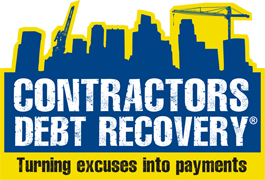The Importance of Reconcilations
Video Transcript
Hi, there. Anthony from Contractors Debt Recovery with another episode of this fantastically reviewed video series. And we’re all looking forward to the DVD or the day that I’m actually on free-to-air television. Wouldn’t that be exciting? Anyway for now it’s just this little video. So we’re going to talk about reconciliation, nothing to do with land titles or peoples or whatever. This has to do with construction work. I hope I spell that right. Anyway, it will do. Reconciliation means accounting for every cent in this job has gone. How often contractors come to me and I said, what are you owed? No idea. Three hundred grand, four hundred, one hundred and fifty something like that. I don’t know. Now that is absurd. That is absolutely absurd but I know what happened.
It happens because so much is going on. You’re generating invoices for variations, invoices for clients that got you to issue credits. There are variations you can’t keep track of it. Now you need to every month be reconciling the whole job and what I’m going to go through now is just the types of things you need to be including in a monthly reconciliation. Because you need to be telling your customer every month what they owed. Not just total claim, less previous claim to this claim. No one cares what previous claim is. I don’t care. You shouldn’t care. What you should care about is based on what you’ve claimed how much is being paid. And you need to be telling your customer every month this is what you owed. And scare them every month. That’s the fun bit.
So here’s the type of things you should create in a reconciliation spreadsheets. Obviously, the contract sum. Let’s look at anything that adds to the value of work done, okay, subcontract. Then we have variations. Obviously, positive variations and depending on size of the job list the variations 1 to whatever 10, 20, 50. Whatever they are. That all adds to the value of the work done. Any hourly, day labour that you’ve supplied over and above outside the fixed contract sum that you’ve agreed on, any extras. So a lot of it is labour. And sometimes your client gets you to provide some materials, some odds on the sides. All of that adds to, this is a concept you need to understand. No one uses it. I use it and you should start to adapt it. It’s called total value of completed work or TVCW. I just made it up but it does sound good. Total value of completed work. Total dollar figure of what you’ve provided.
Now what comes off that is credit issued, if you’d issued them. Negative variations. So negative variations, reductions in scope. They need you to do that. You need to agree on a value. If someone ever says I’m paying this out of your scope you guys go to agree on a dollar value and put that there. So minus that, minus that negative variations. Obviously amounts paid. And back charges and deduction or set off. I called them back charges. If you can agree on those which no one ever does but anyway that’s another thing there. Now that should give you a number which we’ll call A. This should give you a number called B. A minus B is what you are owed at any point in time. And you should be providing this with your monthly claim as a separate document project reconciliation every month.
Then you’re on to of where you’re at. I recently helped a contractor and when we actually went through the invoices my claims for $450,000 he said, but actually 200 of that was double invoicing and he had no idea. He just repeated invoice after invoice. Totally got lost in the whole project. So every month do a reconciliation. Look at these items. Work them into your own reconciliation sheet. I hope to have one example on the website soon for you. Reconcile every month. Remind your client what they owed every month, A minus B. And that should really go a long way to helping you control the job month by month. If you have any questions or queries give us a call. Numbers should be on the screen. Other than that, I’ll see you next time.
